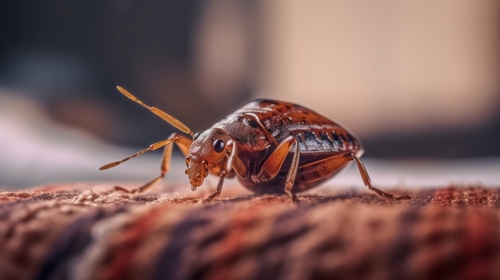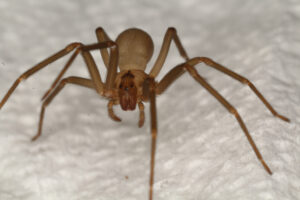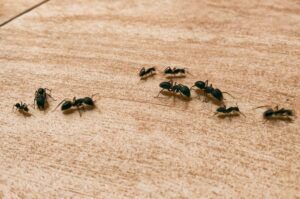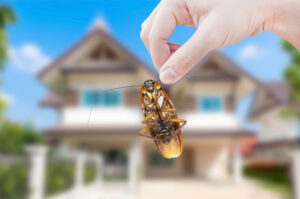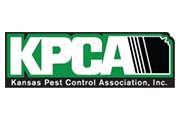Among the many pests homeowners battle in Kansas City are bed bugs. Your favorite subject, we know. Pest infestations are bad enough when they’re not making their nest in your bed where you sleep, and the idea of them invading such a personal space is enough to make anyone burn the mattress and buy a new one immediately.
But before you start any bonfires, you should make sure bed bugs are actually what you’re dealing with. While you may suspect your itchy rash to be bed bug bites, it may be from an allergic reaction or some other pest. How can you know if you have bed bug bites? Let’s explore the signs.
Are Bed Bugs Dangerous?
First, let us put your mind at ease. Bed bugs don’t cause property damage like many other household pests, making them a lot less dangerous to your home than other creepy crawlies you may encounter in your day. The most damage a bed bug infestation can do in your home is ruin furniture if not appropriately treated.
And here’s more good news: Bed bug bites are also usually not dangerous to people or pets. Unless you are allergic to bed bug bites, you won’t experience long-term harm.
That said, the itching and burning sensations aren’t pleasant. And when there’s one bed bug bite, more are likely around your bed and home. So it’s important to contact the pros.
How to Identify Bed Bug Bites
Bed bug bites can easily be confused with other insect bites or rashes from contact with an irritant. Individual bed bug bites present as a red, swollen bump with a darker spot in the center.
If you have bed bugs, you’ll usually get multiple bites in a line or cluster, as a singular bed bug may bite multiple areas along an exposed section of skin. Bed bug bites can also appear similar to hives or welts, or even fluid-filled blisters.
Because bed bug bites look similar to other bites and rashes, you should look for other signs of bed bugs in your home to back up the idea that your injury is from bed bugs. Your bite or rash may be from bed bugs if:
- Multiple household members are affected
- You find blood stains on your sheets
- Dark spots (fecal marks) on your bed that look like mold
- Or if you find actual bed bugs, eggs, or molted shells.
These bites will most frequently appear on the face, neck, arms, and hands, as these parts of the skin are most often left exposed during sleep. You may even notice the bites following a line along the edges of your clothing, like your shirt collar or shirt cuffs.
How to Treat Bed Bug Bites
You should treat bed bug bites similar to how you would other bug bites or rashes. Avoid scratching the bites, as this can cause the wounds to open, bleed, and possibly get infected.
For relief from the itching, you can take an oral antihistamine or apply an over-the-counter steroid cream. You may also take a pain reliever to help with pain and reduce swelling. An ice pack or cold washcloth can soothe itchiness. You can also mix a paste of baking soda and water to apply to the affected area.
Bed bug bites usually don’t require medical attention. The only time you may need to see a doctor is if your bite escalates into a severe allergic reaction or if it becomes infected. Get emergency medical help if you experience any of these symptoms:
- Difficulty breathing
- Wheezing
- Swollen throat or mouth
- Fever
- Dizziness
- Confusion
What to Do If You Have Bed Bugs
Treating your bites is important, and so is treating your home to eliminate bed bugs from the premises! Once bed bugs have decided to call your furniture home, they’re extremely difficult to get rid of on your own. If you have bed bug bites or other signs of an infestation, you can take the following steps:
- Vacuum possible hiding places to contain the infestation
- Store affected fabrics and furniture in plastic bags and remove them from the house
- Wash launderable items on the highest possible heat
- Leave remaining items in extreme cold or heat
- If you don’t have access to extreme temperatures, throw affected items away
- Use protective covers on your mattress and box spring to prevent future infestations
Unfortunately, these methods will only go so far. These methods will often only take care of active bed bugs, and won’t eliminate the whole colony.
Don’t Let the Bed Bugs Bite! Call Us Instead
While the steps mentioned above may help mitigate a bed bug infestation, the only surefire way to eliminate bed bugs is by breaking out the big guns—and by the big guns, we mean professional pest control! At Advantage Termite and Pest Control, we use Integrated Pest Management methods to guarantee a safe, pest-free home so you can enjoy the comfort of your bed without unwelcome guests. To learn more, give the experts at Advantage Termite and Pest Control a call for a free quote and comprehensive details about our pest treatment plan for your situation. Call us at first sight – we do it right!

